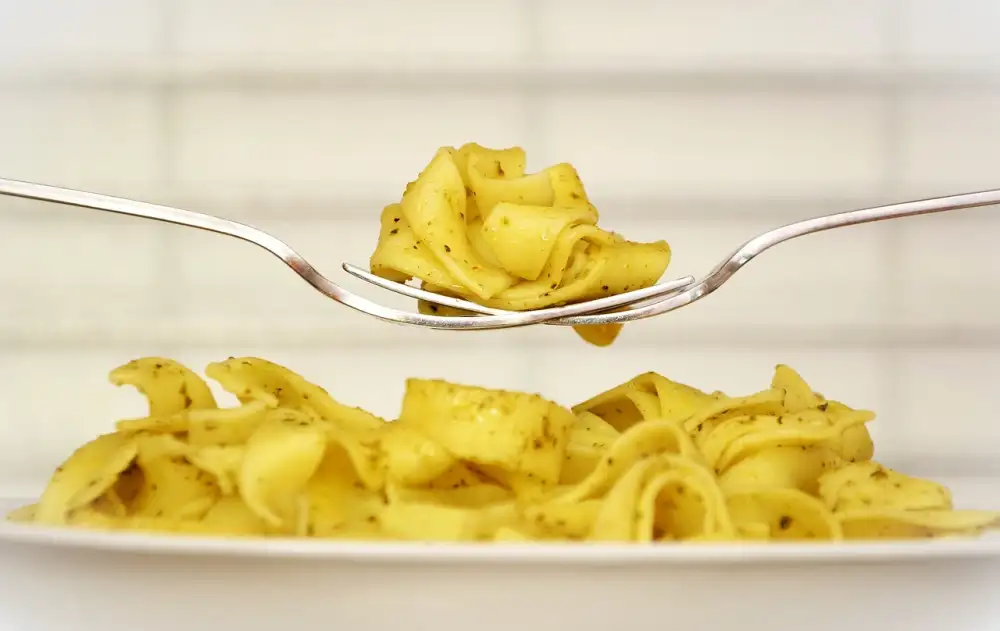Master the Art of Cassoulet: A Delectable Slow-Cooked Recipe with Meat and White Beans

Cassoulet is a rich and hearty slow-cooked dish that originated in the south of France. It is a culinary masterpiece that combines meat, white beans, and aromatic herbs to create a flavorful and satisfying meal. The dish gets its name from the traditional earthenware pot called a "cassole" in which it is cooked. Cassoulet has been enjoyed for centuries and is known for its comforting and rustic qualities. Whether you are a novice in the kitchen or an experienced cook, mastering the art of cassoulet will surely impress your family and friends.
History and Origins of Cassoulet
Cassoulet, a rich and hearty slow-cooked dish, has a fascinating history that dates back centuries. Its origins can be traced to the region of Languedoc in southern France, specifically the towns of Castelnaudary, Carcassonne, and Toulouse. Legend has it that during the Hundred Years' War, when these towns were under siege, the inhabitants gathered whatever ingredients they had - beans, meats, and herbs - and cooked them together in a large cauldron. This improvised dish became known as cassoulet.
Over time, cassoulet evolved into a celebrated culinary tradition in the region. It was traditionally prepared by layering white beans (usually haricot beans), various meats such as duck confit, pork sausages, and sometimes lamb or mutton, along with aromatic vegetables like onions and carrots. The mixture was then slow-cooked for hours until the flavors melded together into a sumptuous stew-like consistency.
Cassoulet's popularity spread beyond Languedoc to other parts of France and even internationally. Today, it is considered one of France's most iconic dishes and is enjoyed by food lovers around the world.
The exact recipe for cassoulet may vary from town to town within Languedoc and also depending on personal preferences. Each region takes pride in its own version of this classic dish. For example, in Castelnaudary, they use only duck confit and Toulouse sausages in their cassoulet. In Carcassonne, lamb or mutton is often included alongside the traditional ingredients.
Despite its humble beginnings as a peasant dish born out of necessity during wartime, cassoulet has become synonymous with indulgence and comfort food. Its rich flavors and melt-in-your-mouth textures make it a true delight for meat lovers.
Intriguingly enough, there have been debates among French chefs and food enthusiasts about the "authentic" way to make cassoulet. Some argue that it should only include specific ingredients, while others believe in embracing regional variations. Regardless of the debate, one thing is certain - cassoulet remains a beloved dish that showcases the culinary heritage and ingenuity of the Languedoc region.
Ingredients for Cassoulet
The key to a delicious cassoulet lies in the quality and combination of ingredients. Here are the essential components you'll need to create this hearty dish:
- Meat: Traditional cassoulet includes a variety of meats such as duck confit, pork shoulder, and sausages like Toulouse or garlic sausage. These meats add depth and richness to the dish.
- White beans: The star ingredient of cassoulet, white beans provide a creamy texture and absorb the flavors of the other ingredients. Cannellini or Great Northern beans work well.
- Aromatics: Onions, carrots, and garlic are commonly used aromatics that add flavor to the dish. They are typically sautéed before being added to the cassoulet.
- Tomatoes: Some recipes call for tomatoes, either fresh or canned, which lend a tangy sweetness to balance out the richness of the meat.
- Stock: A good quality chicken or vegetable stock is essential for creating a flavorful base for your cassoulet.
- Herbs and spices: Bay leaves, thyme, parsley, and black pepper are commonly used herbs and spices in cassoulet recipes. They enhance the overall flavor profile.
- Breadcrumbs: The final touch is a crispy breadcrumb topping that adds texture and helps form a golden crust on top of the cassoulet.
Remember, while these ingredients form the foundation of cassoulet, there can be variations based on regional preferences and personal taste. Experiment with different combinations to find your perfect version of this classic French dish!
Step-by-Step Guide to Making Cassoulet
1. Soak the white beans overnight in cold water. Drain and rinse them before using.
2. In a large pot, cook the bacon until crispy. Remove and set aside, leaving the rendered fat in the pot.
3. Add diced onions, carrots, and celery to the pot with the bacon fat. Sauté until softened.
4. Add minced garlic, thyme, and bay leaves to the pot. Cook for another minute.
5. Push the vegetable mixture to one side of the pot and add the sausages. Brown them on all sides.
6. Stir in tomato paste and cook for a minute before adding white wine to deglaze the pot.
7. Return the cooked bacon to the pot along with the soaked white beans and chicken stock.
8. Bring everything to a simmer and let it cook for 1-2 hours until beans are tender.
9. In a separate pan, brown duck confit pieces until crispy on both sides.
10. Once beans are cooked, remove thyme sprigs and bay leaves from the pot.
11. Stir in duck confit pieces and season with salt and pepper to taste.
12. Transfer everything into a large baking dish or individual cassoulet dishes.
13. Top with breadcrumbs mixed with melted butter for a golden crust.
14. Bake at 350°F (175°C) for about an hour until bubbly and golden on top.
15. Let it rest for a few minutes before serving hot.
Enjoy your homemade cassoulet!
Variations and Regional Differences in Cassoulet
Variations and regional differences in cassoulet are a testament to the versatility of this beloved dish. While the basic ingredients remain the same, each region in France has its own twist on how to prepare and serve cassoulet.
In Toulouse, the birthplace of cassoulet, the traditional recipe includes duck confit, Toulouse sausages, and pork shoulder. This version is known for its rich flavors and hearty texture.
In Castelnaudary, another city famous for its cassoulet, they use white beans, pork shoulder, and mutton instead of duck. The result is a slightly gamier taste that is equally delicious.
In Carcassonne, they add lamb to their cassoulet along with the usual suspects of duck confit and sausage. This adds an extra layer of complexity to the dish.
Other regions may include different types of meat such as goose or partridge. Some even use seafood like mussels or shrimp to create a unique twist on this classic dish.
Regardless of the variations, one thing remains constant – the slow cooking process that allows all the flavors to meld together into a comforting and satisfying meal. So whether you prefer the traditional Toulouse style or want to experiment with different ingredients, there is a cassoulet variation out there for everyone to enjoy.
Tips and Tricks for Perfecting Cassoulet
To perfect your cassoulet, here are some tips and tricks to keep in mind:
- Use quality ingredients: Opt for high-quality meats like duck confit, pork shoulder, and sausages. Also, choose fresh vegetables and herbs for maximum flavor.
- Soak the beans overnight: To ensure the beans cook evenly and become tender, soak them overnight before adding them to the dish.
- Render the fat: When cooking the meats, render their fat first to enhance the flavor of the dish. This step adds richness and depth to the cassoulet.
- Layering is key: Layering the ingredients is crucial in achieving a well-balanced cassoulet. Start with a layer of beans at the bottom, followed by meat and vegetables, then repeat until all ingredients are used.
- Slow-cook it: Cassoulet is traditionally cooked slowly over low heat for several hours. This allows all the flavors to meld together beautifully and results in a rich, hearty dish.
- Skim off excess fat: During cooking, you may notice an accumulation of fat on top of the cassoulet. Skim off this excess fat periodically to prevent greasiness.
- Let it rest: Once your cassoulet is cooked, allow it to rest for about 15-20 minutes before serving. This helps the flavors settle and ensures a more cohesive dish.
By following these tips and tricks, you'll be able to master the art of making a perfect cassoulet that will impress your family and friends with its delicious flavors and comforting appeal.
Serving and Pairing Suggestions for Cassoulet
When it comes to serving and pairing cassoulet, there are a few suggestions that can enhance your dining experience. Firstly, serve the cassoulet piping hot in individual bowls or on a large platter for sharing. The rich flavors and hearty texture of the dish are best enjoyed when it is fresh out of the oven.
As for pairing, cassoulet pairs well with a variety of wines. Red wines such as Syrah, Cabernet Sauvignon, or Malbec complement the robust flavors of the dish. If you prefer white wine, opt for a full-bodied Chardonnay or Viognier.
To complete the meal, serve crusty bread or baguette on the side to soak up all the delicious sauce. A simple green salad with a tangy vinaigrette can also provide a refreshing contrast to the richness of the cassoulet.
For those looking to add some extra indulgence, consider serving cassoulet with duck confit or crispy bacon on top. These additions add an extra layer of flavor and texture to an already decadent dish.
Remember, cassoulet is meant to be enjoyed slowly and savored. So gather your loved ones around the table, pour yourself a glass of wine, and indulge in this classic French comfort food.
Frequently Asked Questions about Cassoulet
1. What is cassoulet?
Cassoulet is a rich and hearty French dish made with meat, usually pork or duck, and white beans. It is slow-cooked to perfection, resulting in a flavorful and comforting meal.
2. Can I use different types of meat in cassoulet?
Absolutely! While traditional cassoulet uses pork or duck, you can experiment with other meats like lamb, sausage, or even chicken. Just make sure to adjust the cooking times accordingly.
3. How long does it take to make cassoulet?
Cassoulet is a labor of love that requires time and patience. The cooking process can take anywhere from 4 to 6 hours, but the result is well worth the effort.
4. Can I make cassoulet ahead of time?
Yes! In fact, cassoulet tastes even better when made ahead of time as it allows the flavors to meld together. Simply reheat it gently before serving.
5. Can I freeze leftover cassoulet?
Absolutely! Cassoulet freezes exceptionally well. Just make sure to store it in an airtight container and thaw it thoroughly before reheating.
6. What are some common accompaniments for cassoulet?
Traditional accompaniments for cassoulet include crusty bread, pickles, and a green salad. These help balance out the richness of the dish.
7. Can I make a vegetarian version of cassoulet?
Certainly! You can substitute the meat with mushrooms or root vegetables for a delicious vegetarian twist on this classic dish.
8. Are there any shortcuts to making cassoulet?
While there are no shortcuts to achieving the authentic flavors of cassoulet, you can save time by using canned beans instead of soaking dried ones overnight.
9. Is cassoulet gluten-free?
Yes! Cassoulet is naturally gluten-free as long as you use gluten-free ingredients and avoid adding any flour or breadcrumbs to the recipe.
In conclusion, cassoulet is a versatile and satisfying dish that can be customized to suit your taste preferences. Don't be afraid to experiment with different meats and flavors to create your own signature cassoulet masterpiece.
In conclusion, cassoulet is a truly remarkable dish that showcases the rich culinary traditions of southwestern France. Its slow-cooked goodness and complex flavors make it a favorite among food enthusiasts around the world. Whether you choose to make the traditional version with duck confit and Toulouse sausage or experiment with different meats and beans, cassoulet is sure to impress your taste buds. Remember to be patient and give it the time it deserves to develop its full flavor. So go ahead, master the art of cassoulet and savor every delicious bite!
Published: 03. 01. 2024
Category: Recipes



